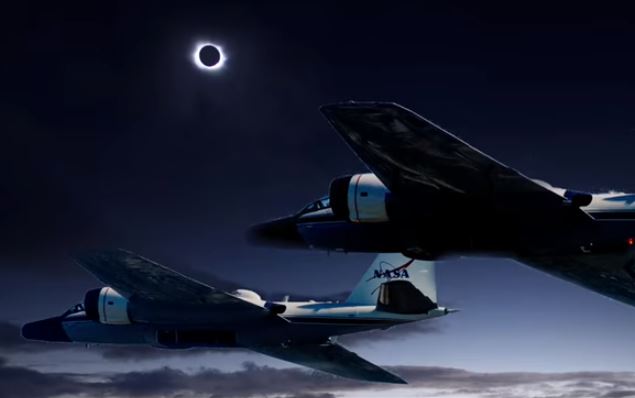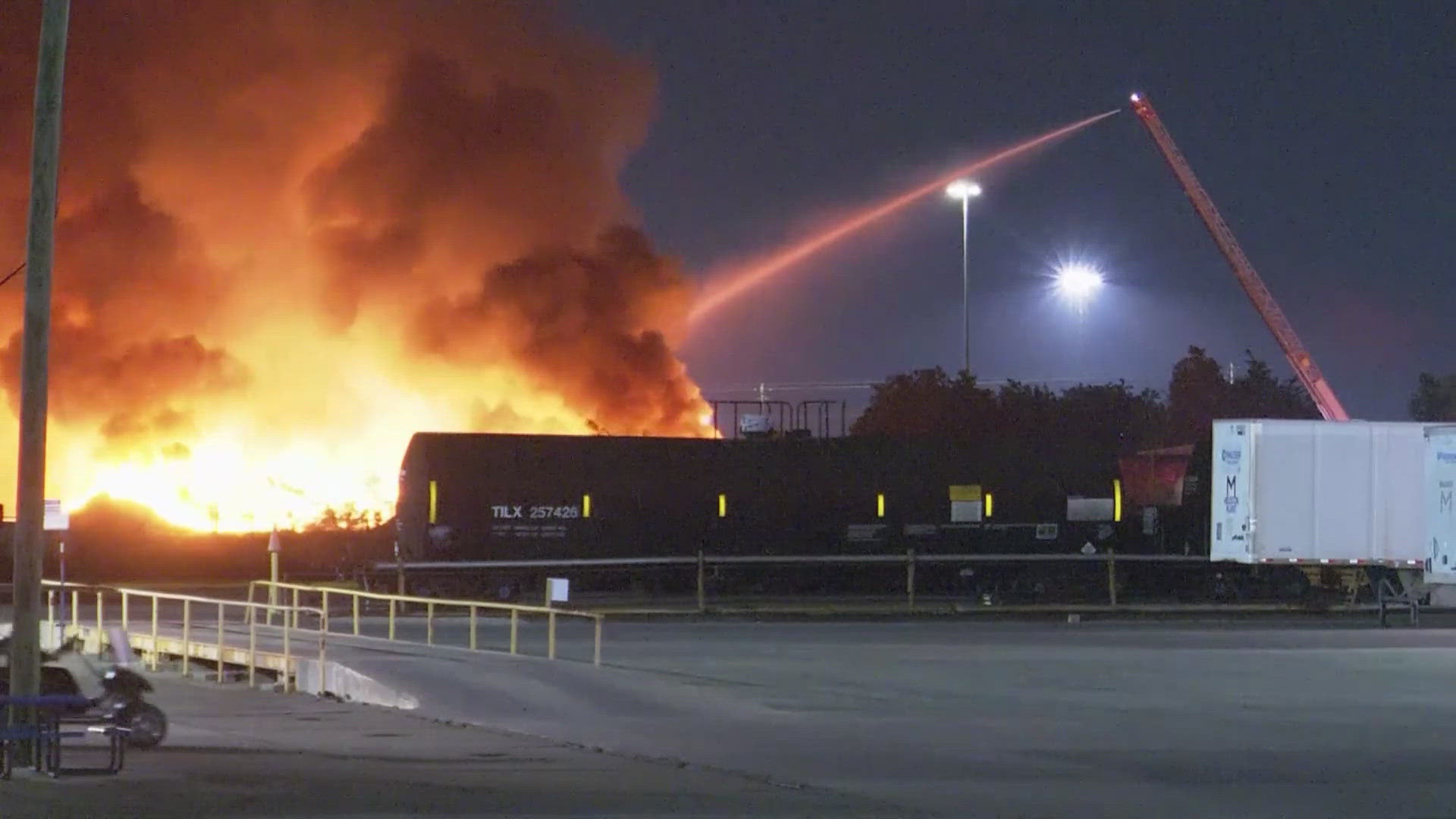It's go time for a pair of NASA pilots who will chase the eclipse to learn secrets of the sun. They left Ellington Field in Houston to travel toward the sun during the eclipse.
Their rides: 1960s-era former bomber jets, called WB-57s.
Cary Klemm is one of four NASA flight crew members who will be chasing the eclipse over Missouri, Illinois and Kentucky at 460 mph.
"My job is to calibrate and initialize the camera payload that we'll be using to look at the eclipse. That includes focusing and zooming in to get the best shot," Klemm said.
The planes high-altitude research planes will fly at 50,000 feet altitude (which is 10,000 feet higher than commercial passenger jets typically cruise) to guarantee a cloud-free view of the total solar eclipse.
Their flight path will extend the observation time from 2.5 minutes, if they were on the ground, to seven minutes! This means they can take nearly three times the readings.
On board, they'll have nose-mounted telescopes to get a close-up view of the corona of the sun in hopes of determining why its temperature measures in the millions of degrees, while the surface of the sun is only about 10,000°F. They'll also get spectacular views of Mercury -- a planet typically too close to the sun to observe accurately since it's often hidden in daylight. (You can only really see the closest planet to the sun in April and May during the evening, and October/November in the pre-dawn hours.) They'll not only get a bead on Mercury during the middle of August (which is unheard of), but be able to thermally-image it -- for the first time ever! NASA has way, out-cooled all of us.

Only pitfalls in their coolness: NASA won't be able to keep up with the eclipse despite using a very neat aircraft. While their WB-57F's can go really far at very high altitude without need of refueling (representing their reasoning for choosing this plane) that eco-mileage comes at a cost: speed. With a cruising speed of only 476mph, it's goes about 100 mph slower than a cruising Boeing 747. This means the passenger jet could observe the shadow for over a minute longer than the WB-57F, extending viewing time to over 8 minutes. This speed pitfall becomes even more apparent if you consider that we have the military capability to match and exceed the eclipse's speed, which means we could technically observe it from beginning to end. That said, commercial jets don't have fancy, high strength telescopes mounted on the nose, nor do super-sonic, long-range bombers.
So I conclude, NASA has indeed out-cooled all of us yet again. They certainly are not squandering this opportunity to do some real science during a rare event and we all enjoy the benefit! Go NASA!
Follow me on Facebook
-Brooks



